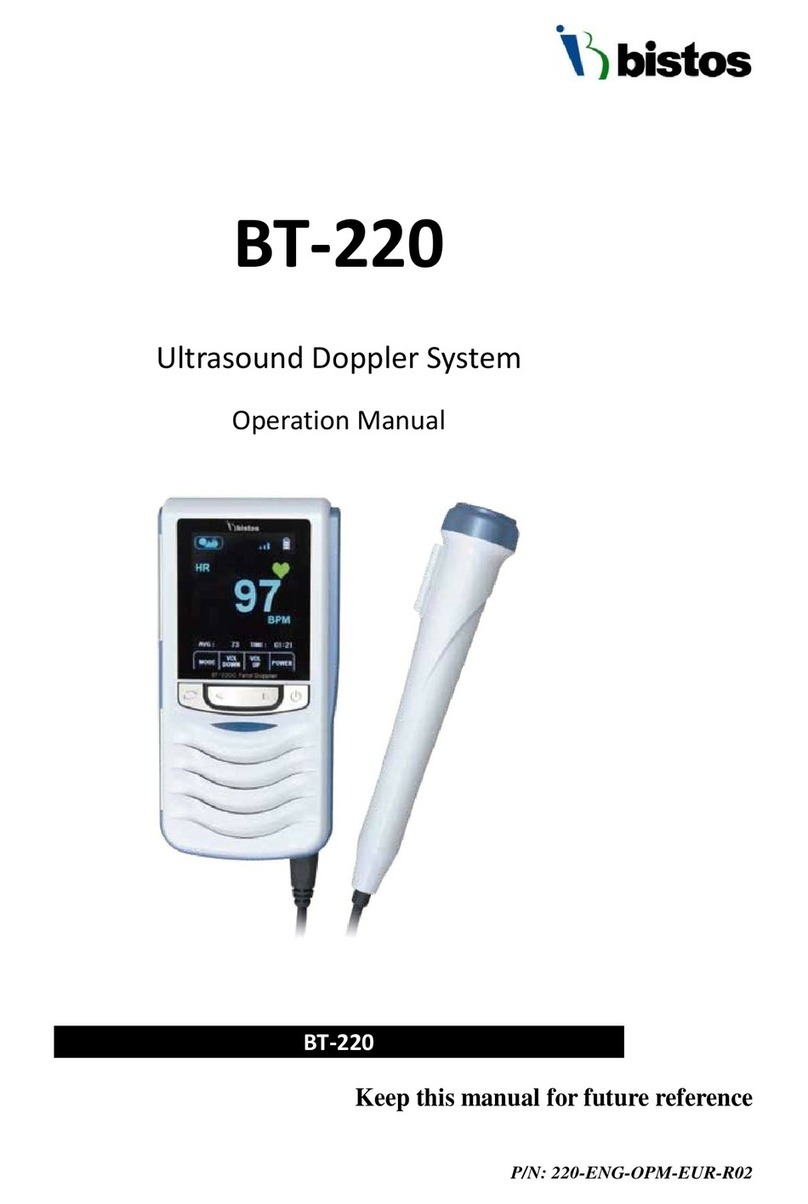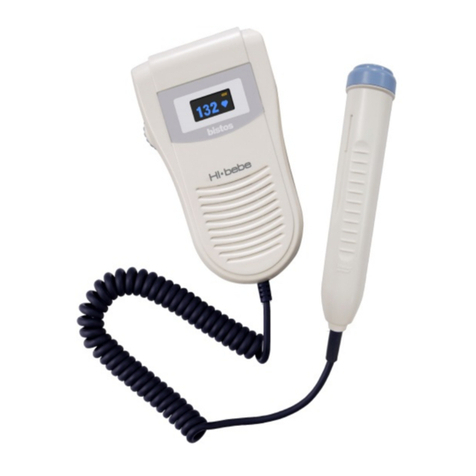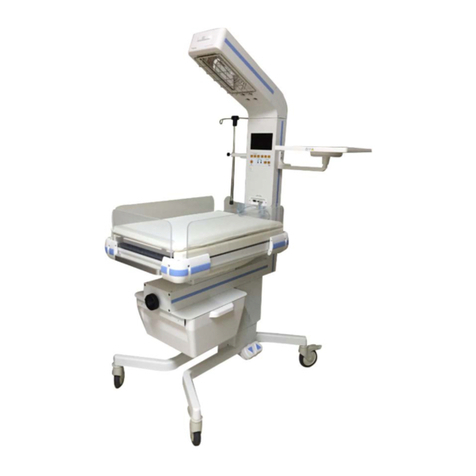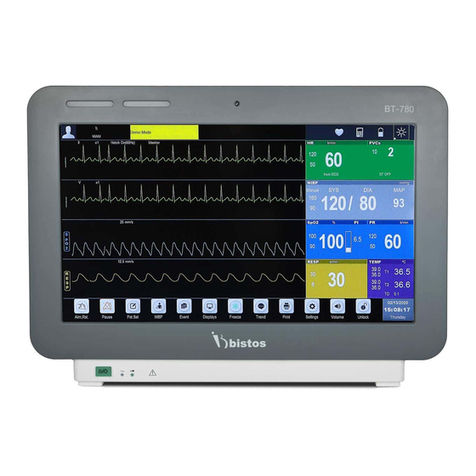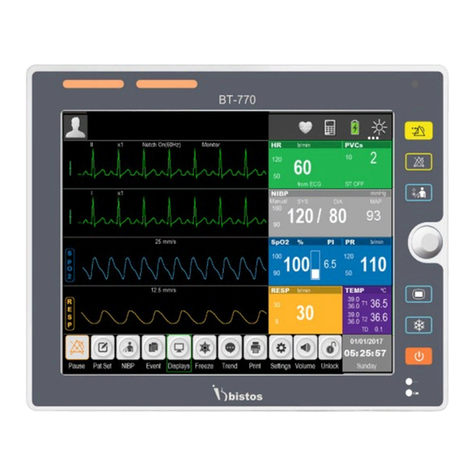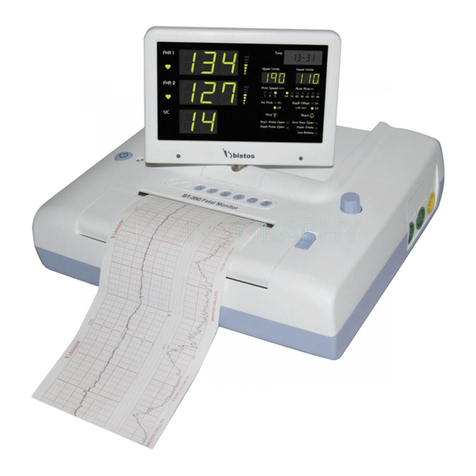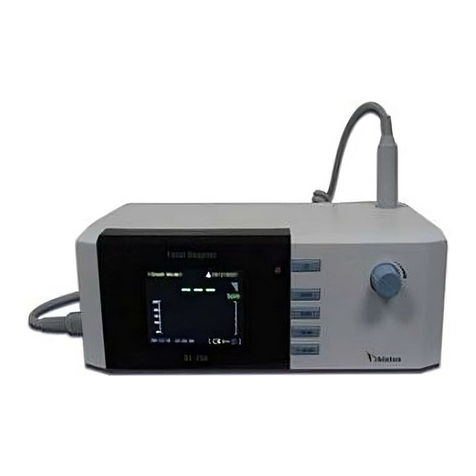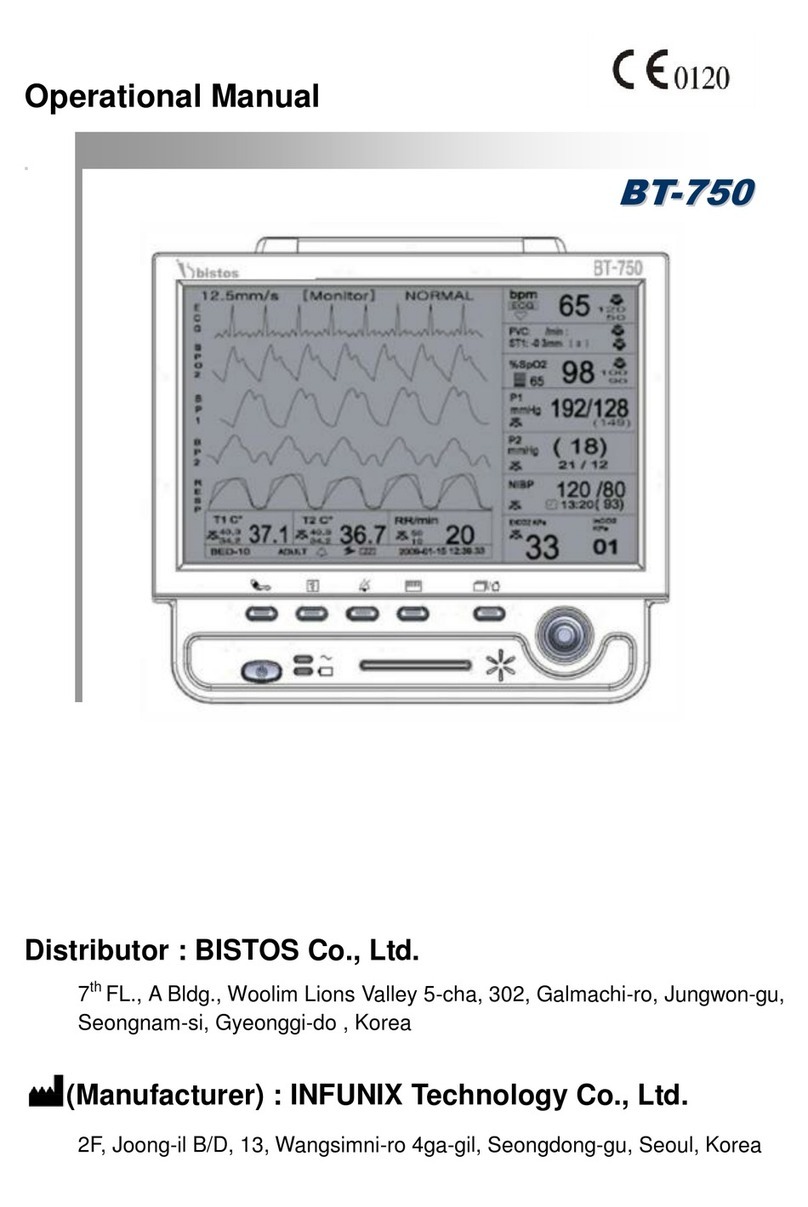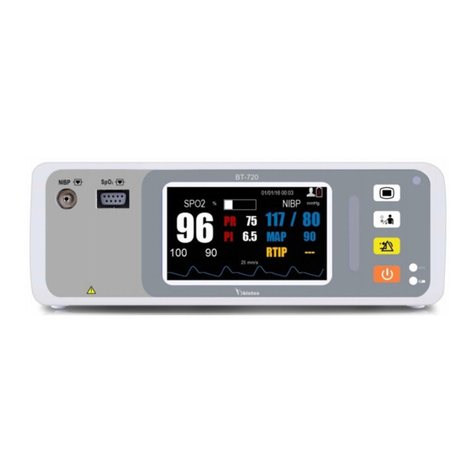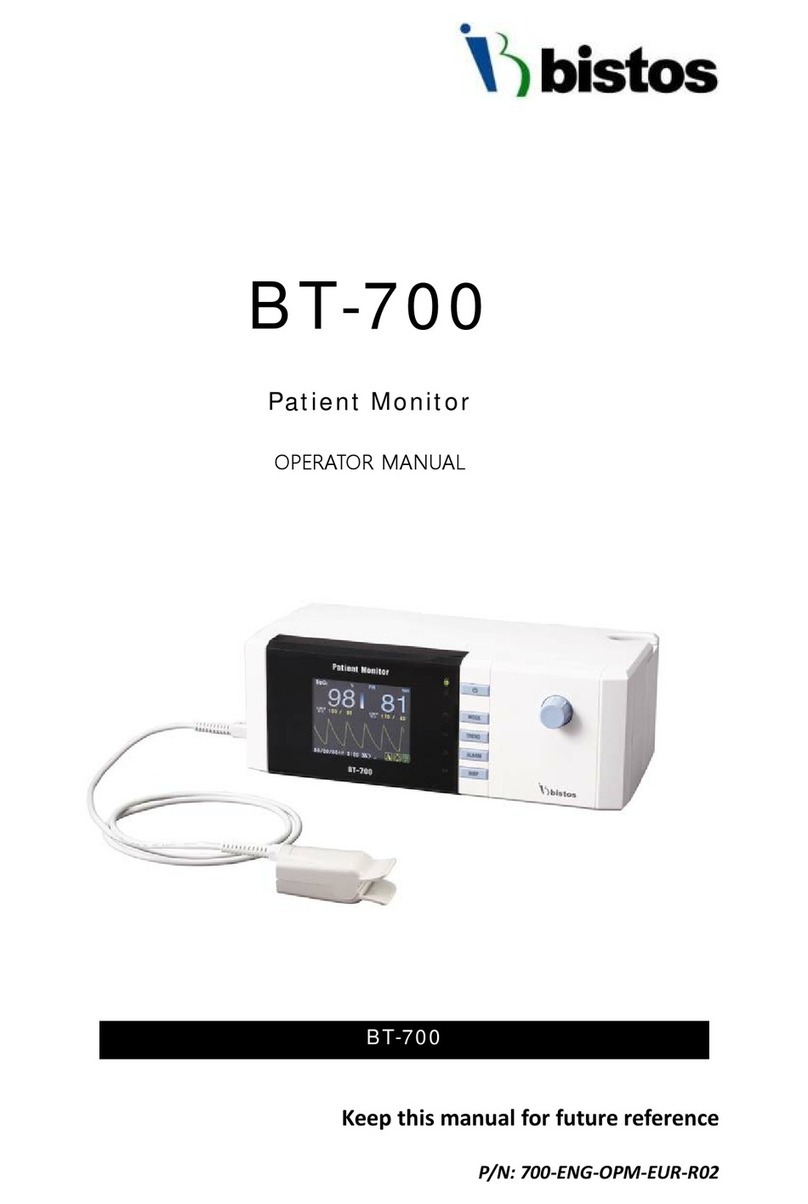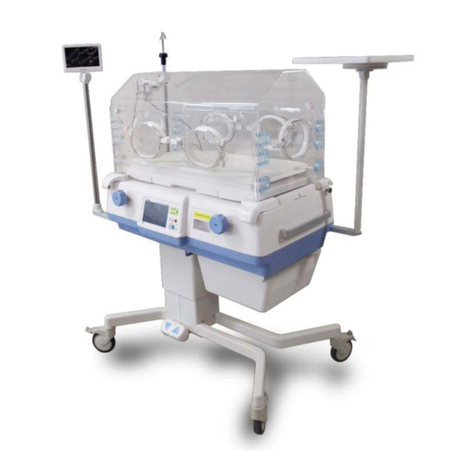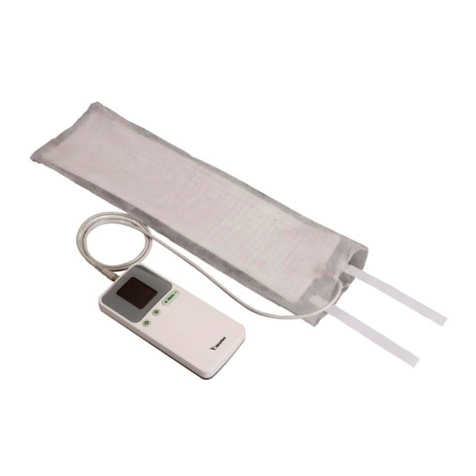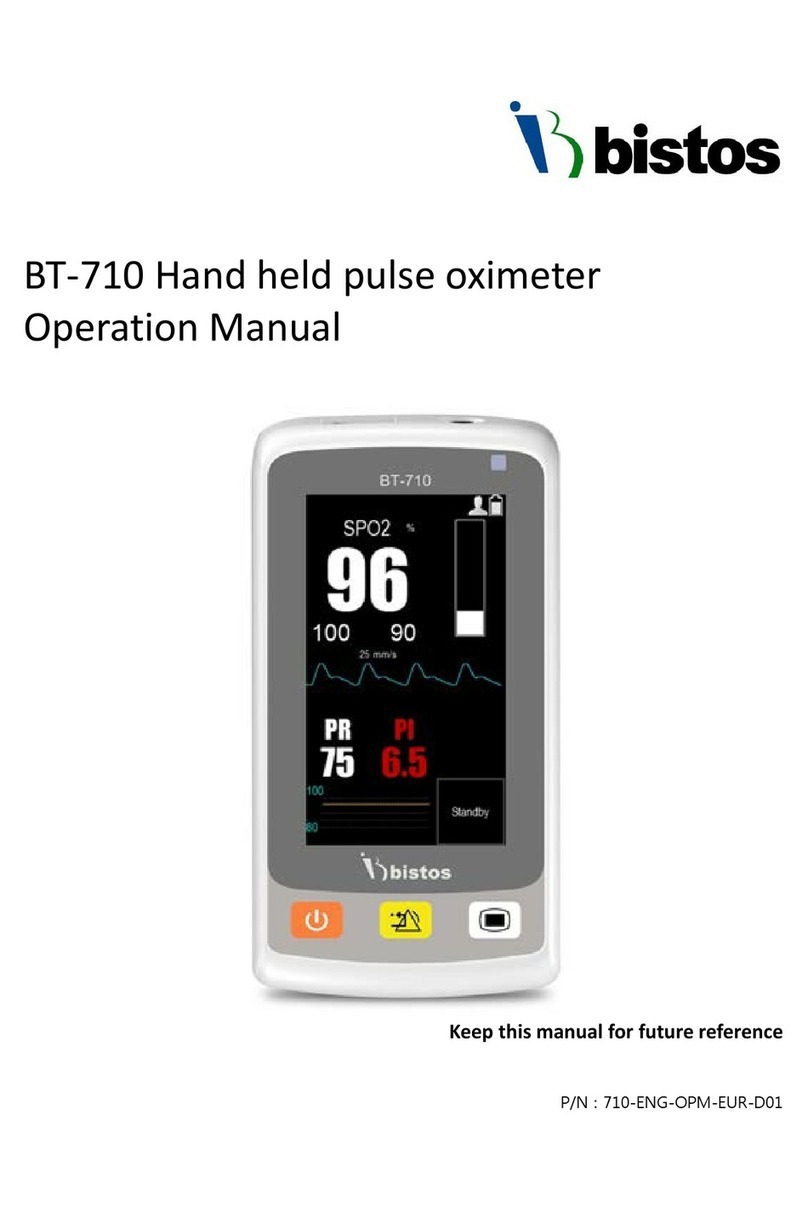Section1
Safety Information
1.1 Instructions for the Safe Operation and Use of BT-400
BT-400 should be used only appropriately trained personnel and under the direction
of qualified medical personnel.
Do not attempt to service the BT-400. Only qualified service personnel by Bistos
Co., Ltd. should attempt any needed internal servicing.
The BT-400 is not specified or intended for operation in conjunction with any other
type of equipment except the specific devices that have been identified for use in
this Operator’s Manual.
Use of reflective foils may cause hazardous body temperatures when the type of
phototherapy influences radiation.
The patient’s bilirubin values shall be measured regularly.
Blue light can hinder clinical observations by masking skin color changes, such as
cyanosis.
Due to photo effects, drugs and infusion liquids shall not be stored in the radiation
area.
Do not touch the equipment with wet hand. There is a risk of electrical shock.
Only the AC cord supplied with the BT-400 is approved for use with the Unit.
Do not leave the power cable in the place where people or cargo passes through
frequently. There is a possibility that product or person trips on a cable.
Wear the eye shield or blindfold to protect patient’s eye and please check frequently
that it has been worn properly.
Please monitor periodically that patients under light irradiation do not depart from
the effective surface area of the light.
Even though she/he is an adult, the operator may experience some effects if she/he
stays longer in the area irradiated by phototherapy.
While BT-400 is operating, use the eye shield or blindfold to protect eye when the
light for the treatment illuminates other patients.

